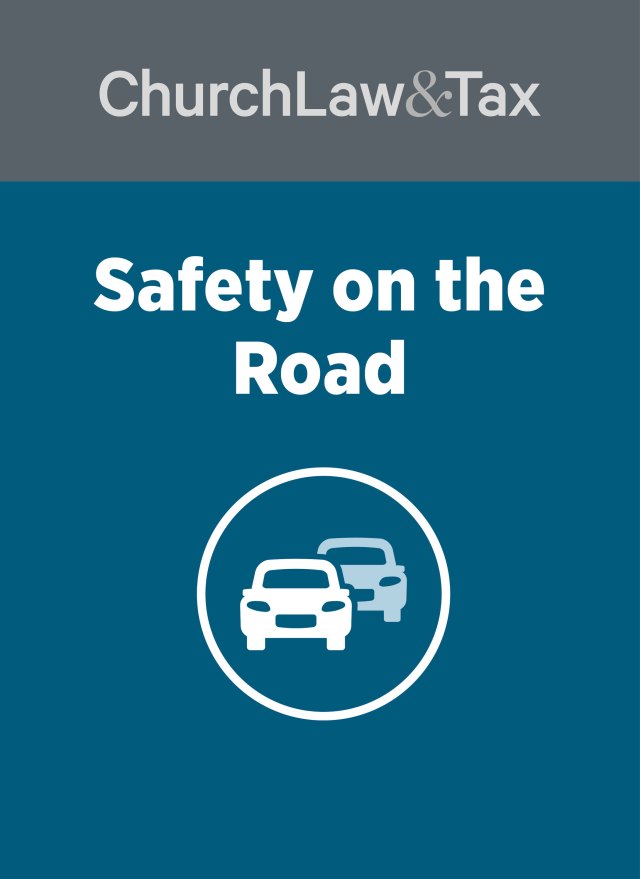Key point. A church may be liable for accidents caused by staff members as a result of using a cell phone while driving a vehicle on church business.
* An Illinois court ruled that a driver’s use of cell phone could be presented to a jury as evidence of negligence. A man (“Randy”) was driving a pick-up truck on a state highway. The weather was clear, and the roads were dry. Randy saw a large white van stopped in his lane of travel, and another car some 200 feet ahead of him approaching him in the opposite lane of travel. When he realized that he was going to hit the van, he decided to hit the rear left side of the van with the front passenger side of his truck. When he hit the brakes, his truck started to skid forward to the left. The impact pushed the front end of his truck about 18 inches over the center line. The approaching car was approximately 70 feet away when the impact occurred. Randy saw the car go past him, hit its brakes, and turn onto the gravel. The driver of the other car then moved across the center line and hit another vehicle head-on. The time of the accident was 1:20 p.m.
The driver and passenger in the other vehicle (the “plaintiffs”) were seriously injured, and sued Randy and the driver of the car that hit them (the “defendant”). Randy sought to shift the blame to the defendant by showing that the defendant had been using a cell phone at the time of the accident, which distracted him and contributed to the accident. The defendant denied using a cellular telephone at the time of the accident, but Randy produced billing records from the defendant’s cell phone provider showing that he used his cellular telephone for one minute between 1:14 p.m. and 1:15 p.m., and that he made a two-minute call to the same telephone number at 1:29 p.m. The trial court barred this evidence, finding that there was no direct evidence that the defendant was using his cellular telephone at the time the accident occurred. A jury found Randy to be 90% at fault, and the defendant 10% at fault. On appeal, Randy claimed that the trial court erred in excluding evidence that the defendant was using his cellular telephone immediately prior to the accident. The appeals court agreed with Randy:
The record indicates that the accident was reported to the police at 1:20 p.m., and Randy’s offer of proof showed that [the defendant] used his cellular telephone between 1:14 p.m. and 1:15 p.m. We are mindful that all clocks are not synchronized, and that it may have taken five minutes for the accident to be reported. Additionally [another witness] testified that it appeared that the defendant had only one hand on the steering wheel. On the basis of the record, the evidence of the defendant’s use of his cellular telephone was not so remote as to require its exclusion. We therefore conclude that this evidence was sufficiently relevant under the facts of this case that it should have been admitted. The weight and value of this evidence should have been left to the jury. We believe that the exclusion of the cellular telephone evidence likely affected the jury’s allocation of fault between the defendants. This error also requires that the cause be remanded for a new trial between the defendants on the issue of the allocation of fault.
Application. This case illustrates the legal risk churches incur when staff members use cell phones while driving a vehicle on church business. If the driver is found to be negligent as a result of using a cell phone, his or her negligence will be imputed to the church if it occurred during the course of employment. The risks associated with the use of cell phones while driving are significant, and the benefit is minimal. It is difficult to imagine an emergency that would be so urgent that a driver could not pull off the road to make a call. With regard to incoming calls, the driver should simply hand the phone to another adult in the vehicle, or pull off the road periodically to check for messages.
The use of a cell phone by a church staff member while driving a car on church business should be discouraged, if not prohibited. If the phone has a “voice mail” feature, a missed call that must be returned a few minutes later when the driver reaches his or her destination ordinarily will not create a problem. Some churches may want to make this rule less restrictive by allowing use of cell phones while driving in the event of an emergency, and other churches will want to eliminate any restrictions on the use of cell phones by church staff members while driving. In such cases, churches at a minimum should require that the phone be used in “hands free” mode, and appropriate devices to permit such use should be provided. Any “less restrictive” policy should be applied only to church staff members while driving alone, and not to drivers of children or adults. As this case demonstrates, billing records often will be able to verify that a driver was using a cell phone at the time of an accident. Hiscott v. Peters, 754 N.E.2d 839 (Ill. App. 2001).
© Copyright 2002 by Church Law & Tax Report. All rights reserved. This publication is designed to provide accurate and authoritative information in regard to the subject matter covered. It is provided with the understanding that the publisher is not engaged in rendering legal, accounting, or other professional service. If legal advice or other expert assistance is required, the services of a competent professional person should be sought. Church Law & Tax Report, PO Box 1098, Matthews, NC 28106. Reference Code: m21 m86 c0502
